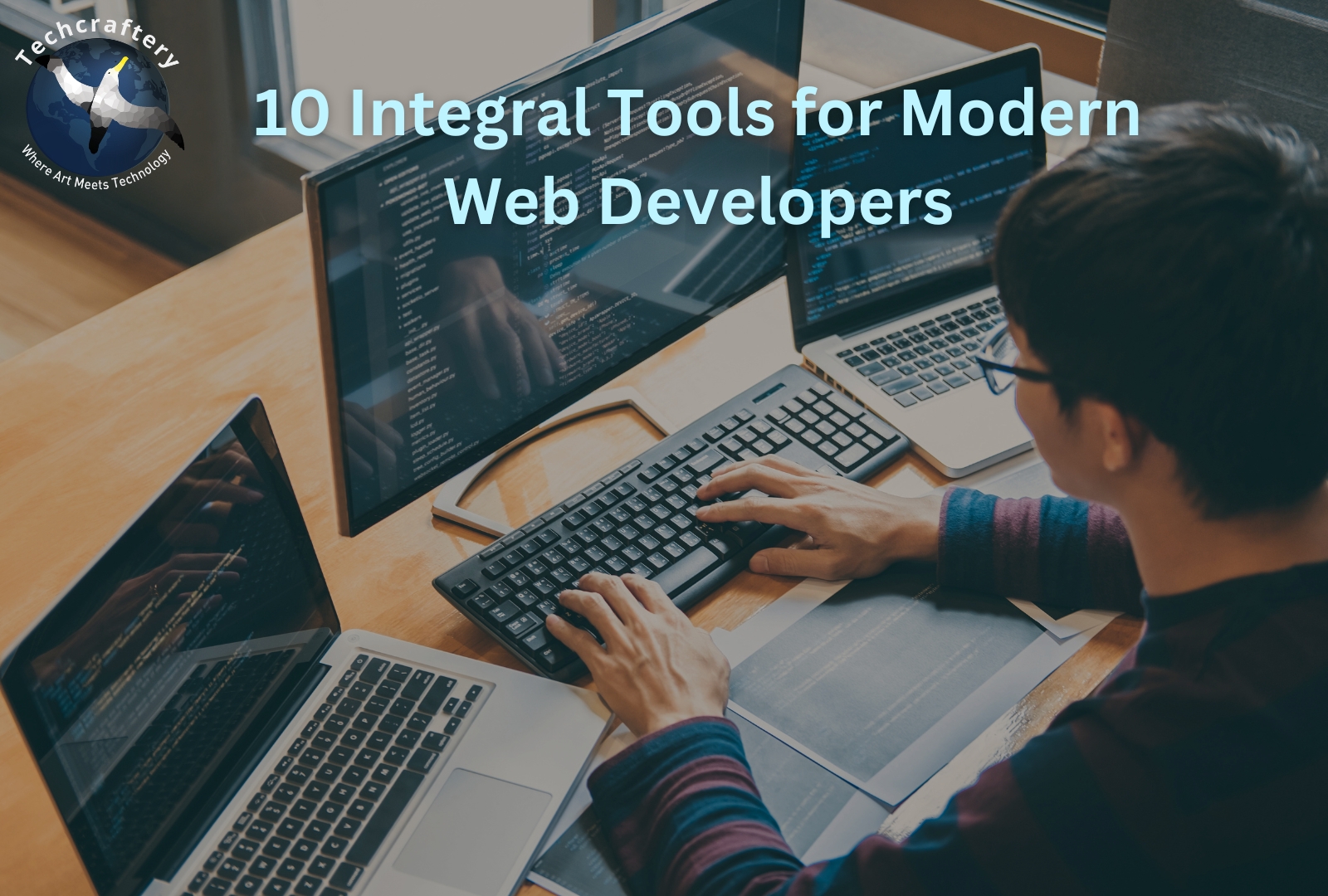In the ever-evolving landscape of web development, having the right tools at your disposal can make a world of difference. Whether you’re building a simple website or a complex web application, the tools you choose can enhance your productivity, improve code quality, and streamline collaboration. This article explores ten integral tools that every modern web developer should consider integrating into their workflow.
1. Visual Studio Code
Overview:
Visual Studio Code (VS Code) is a free, open-source code editor developed by Microsoft. It supports various programming languages and is highly extensible.
Key Features:
- IntelliSense: Provides intelligent code completion based on variable types, function definitions, and imported modules.
- Debugging: Built-in debugging capabilities allow developers to debug their code directly within the editor.
- Extensions: A rich marketplace of extensions that enhance functionality, from Git integration to live server features.
Benefits:
VS Code’s flexibility and extensive features make it an excellent choice for both beginners and experienced developers. The vast array of extensions allows you to tailor the editor to your specific needs, improving your workflow.
2. Git and GitHub
Overview:
Git is a distributed version control system, while GitHub is a web-based platform that hosts Git repositories. Together, they facilitate collaborative coding and version control.
Key Features:
- Branching and Merging: Git allows developers to work on features in isolation and merge changes seamlessly.
- Pull Requests: GitHub’s pull request feature enables code review and discussion before merging changes.
- Collaboration: Facilitates teamwork with features like issue tracking and project boards.
Benefits:
Using Git and GitHub helps developers maintain a history of code changes, collaborate effectively, and manage projects efficiently. It also simplifies the process of reverting changes and tracking issues.
3. Figma
Overview:
Figma is a web-based design tool that allows for collaborative interface design. It is widely used for UI/UX design and prototyping.
Key Features:
- Real-time Collaboration: Multiple users can work on designs simultaneously, making it ideal for team projects.
- Prototyping: Allows designers to create interactive prototypes that can be tested and shared easily.
- Design Systems: Supports the creation of reusable design components and styles.
Benefits:
Figma streamlines the design process by facilitating collaboration between designers and developers. Its prototyping features allow for better visualization of user experiences before implementation.
4. Bootstrap
Overview:
Bootstrap is a popular front-end framework for developing responsive and mobile-first websites. It provides pre-built CSS and JavaScript components.
Key Features:
- Responsive Grid System: Enables developers to create layouts that adapt to different screen sizes.
- Pre-styled Components: Includes buttons, forms, navigation bars, and modals that can be easily customized.
- Customization: Offers themes and customization options for tailoring styles to fit specific branding needs.
Benefits:
Bootstrap accelerates the development process by providing a robust framework that reduces the need for custom CSS. Its responsive design capabilities ensure that websites look great on any device.
5. Sass
Overview:
Sass (Syntactically Awesome Style Sheets) is a CSS preprocessor that allows for more advanced and organized stylesheets.
Key Features:
- Variables: Enables the use of variables for colors, fonts, and other CSS properties, promoting consistency.
- Nesting: Allows for nesting of CSS selectors, making stylesheets more readable and manageable.
- Mixins and Functions: Facilitates the creation of reusable styles and complex functions.
Benefits:
Sass enhances the maintainability and scalability of stylesheets, making it easier to manage large projects. Its features help developers write cleaner and more efficient code.
6. Webpack
Overview:
Webpack is a module bundler that simplifies the process of managing assets and dependencies in web applications.
Key Features:
- Code Splitting: Allows for the splitting of code into separate bundles, improving loading times and performance.
- Loaders: Supports transforming files (like Sass, TypeScript, or images) into modules.
- Plugins: Extensible with plugins to optimize the build process and manage assets.
Benefits:
Webpack helps streamline the development workflow by automating tasks such as minification and optimization. Its modular approach enables better organization of code and assets.
7. Postman
Overview:
Postman is an API development tool that simplifies the process of building, testing, and documenting APIs.
Key Features:
- API Testing: Enables developers to send requests and analyze responses easily.
- Environment Variables: Allows for the management of different environments (development, staging, production).
- Documentation: Automatically generates documentation for APIs based on defined endpoints and requests.
Benefits:
Postman enhances the API development process by providing a user-friendly interface for testing and documenting APIs. It helps ensure that APIs function correctly before they are deployed.
8. Docker
Overview:
Docker is a platform that enables developers to automate the deployment of applications inside lightweight containers.
Key Features:
- Isolation: Each application runs in its container, ensuring consistency across different environments.
- Portability: Containers can be easily moved between different environments without modification.
- Version Control: Allows for versioning of containers, making it easy to roll back to previous versions.
Benefits:
Docker simplifies the deployment process and eliminates the “it works on my machine” problem. Its containerization technology ensures that applications run consistently in any environment.
9. Jest
Overview:
Jest is a JavaScript testing framework developed by Facebook, commonly used for testing React applications.
Key Features:
- Zero Configuration: Works out of the box without the need for extensive setup.
- Snapshot Testing: Allows developers to track changes in UI components over time.
- Mocking: Provides built-in functions for mocking functions, modules, and timers.
Benefits:
Jest makes it easy to write and run tests for JavaScript applications, ensuring code reliability and improving the overall quality of projects. Its simplicity encourages developers to adopt testing practices.
10. Trello
Overview:
Trello is a visual project management tool that uses boards, lists, and cards to help teams organize tasks and collaborate effectively.
Key Features:
- Drag-and-Drop Interface: Easily manage tasks by moving cards between lists.
- Labels and Checklists: Organize tasks with labels, due dates, and checklists to keep track of progress.
- Integrations: Connects with various other tools like Slack, Google Drive, and more.
Benefits:
Trello enhances team collaboration by providing a visual overview of project progress. Its simplicity and flexibility make it suitable for managing tasks in any development project.







